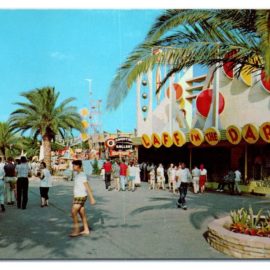
The Mighty Mississippi waters full of silt built the Louisiana Delta. The Corps of Engineers, helping commerce, built dams and constrained the River. These efforts helped commerce but stopped the land building and now we are in dire straits. Enter the Mid-Barataria Diversion.
At the beginning of March, we reached a critical moment in Louisiana’s battle to combat coastal land loss and rebuild our coast. The U.S. Army Corps of Engineers released its draft Environmental Impact Statement on the Mid-Barataria Sediment Diversion, a key step in permitting for a major component of the state’s Coastal Master plan. The Mid-Barataria Sediment Diversion is a game-changing coastal restoration project that must move forward if we are to turn the tide on Louisiana’s land loss crisis. We are voicing support for this project, which implements an innovative and sustainable approach to reducing our land loss, rebuilding our wetlands, and creating significant economic benefit. Being the largest individual restoration project in U.S. history, the Mid-Barataria Sediment Diversion will build more wetlands than any other project of its kind in the world. The project, funded by the BP Deepwater Horizon settlement, will develop new land and sustain existing wetlands by using the power of the Mississippi River to move sediment and fresh water from the river into nearby basins, mimicking nature’s historic land-building processes. Without this project, over the next 50 years the Barataria Basin alone could lose an additional 550 square miles of land, which is approximately one and a half times the size of the city of New Orleans. Such an outcome would jeopardize the safety and prosperity of the entire region, threaten our way of life and eviscerate coastal habitat that wildlife need to survive.
The Advocate
Coastal restoration is both an economic need as well as a geographical need.
In the words of Michael Hecht, President and CEO of GNO, Inc., “Coastal restoration is truly where the economy meets the environment.” Economic development and coastal restoration are intrinsically linked: By committing to restoring the coast, we protect existing and future investment in Louisiana while developing an exportable knowledge-based industry and specialized workforce. Implementation of projects outlined in Louisiana’s Comprehensive Master Plan for a Sustainable Coast, such as the Mid-Barataria Sediment Diversion, will preserve our working coast, reduce hurricane storm surge, and encourage business growth.
New Orleans will benefit as the work on the Diversion will require trained and skilled workers.
Coastal projects foster diversity and growth for our economy, as highlighted by GNO, Inc.’s 2019 Coastal Restoration Workforce Outlook, which found that Coastal Master Plan projects will yield thousands of jobs in operations, maintenance and monitoring, as well as construction. The Army Corps of Engineers analysis indicates that the Barataria project could generate an impressive 12,400 jobs in the state, mostly in the greater New Orleans region, during its three to five-year construction period. Particularly if coupled with training, these jobs will expand opportunities for locals to enter good-paying career paths as dredge operators, carpenters, plumbers, pipefitters, drafters, engineers, architects, computer analysts and programmers, and more. In a 2017 report, Dr. Stephen Barnes of LSU found that coastal restoration and protection jobs yield an average wage of $59,000/year, significantly higher than the state’s median wage of $34,9000/year. Businesses will benefit, too. According to a 2019 report by economist Dr. Loren Scott, construction of the Mid-Barataria and Mid-Breton Sediment Diversion projects will support an increase in regional business sales by $3.1 billion.
There are problems. Some industries will be adversely effected. The State recognizes this and have offered mitigation to these groups. More discussion will be needed but the parties seem to know that this is the right work at the right time.
Coastal restoration and protection is a cornerstone to securing a thriving economy in the greater New Orleans region, presently and for future generations. We support the construction of the Mid-Barataria Sediment Diversion, as it is our best shot at protecting vulnerable communities, reducing hurricane storm surge, and fostering economic growth for years to come. The Mid-Barataria Sediment Diversion is where the economy meets the environment, and thrives.
Working together we can make this a benefit to both the economy and the environment.



